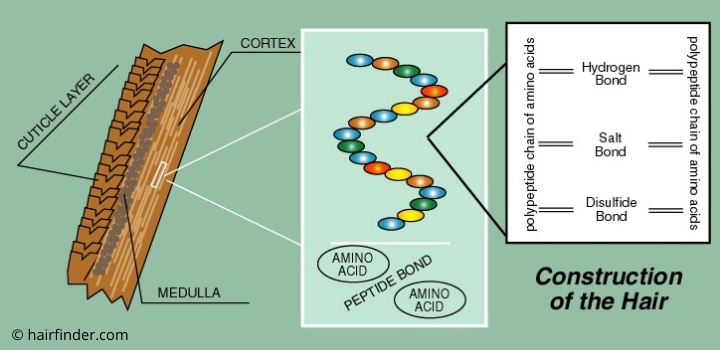Construction of a Hair

This image shows a diagram of hair structure.
1. A cross-section of the hair shaft shows three main layers:
• Cuticle layer (outermost layer)
• Cortex (middle layer)
• Medulla (innermost core)
2. A zoomed-in view of the cortex shows the molecular structure, specifically a polypeptide chain composed of amino acids linked by peptide bonds.
3. The scheme on the right shows the types of chemical bonds present in hair:
• Hydrogen bonds
• Salt bonds
• Disulfide bonds
The cuticle is the protective outer layer made of overlapping cells that look like roof shingles. When intact, it gives hair shine and prevents damage. Hair products like conditioners work by smoothing this layer.
The cortex contains keratin proteins and provides strength, elasticity, and color (from melanin). This is where most chemical treatments (coloring, perming, relaxing) act.
The medulla is the central core, which may be absent in fine hair.
The chemical bonds are particularly important for hair styling:
• Hydrogen bonds are temporary and break with water/heat. This is why wet styling works.
• Salt bonds are ionic and affected by pH. This is why acidic/alkaline products change hair texture.
• Disulfide bonds are the strongest, providing structural integrity. Permanent waves and straightening treatments work by breaking and reforming these bonds.
Understanding this hair structure helps explain why different hair treatments work and how damage occurs when the structural integrity is compromised.
©Hairfinder.com
See also: More about hair growth